African Indigenous Fruits with Potential Health Benefits
Africa is a treasure trove for medicinal plants found nowhere else in the world. Traditional African medicine is effective and still remains as the main source of remedies for the continent, servicing the needs of up to 80% of the population. Though little research and development has been done, these plants remain a viable source for the development of new drugs and health supplements.
Though Western media usually depicts Africa as a dry and arid land, it has a wide range of ecosystems including mangrove swamps, savannahs, and rainforests. While rainforests and swamps are abundant with medicinal plants, dry places like savannahs and deserts contain fruit-bearing trees that are packed with nutrients and therapeutic value.
Fruits from these trees can be classified as “superfruits”. Though originally a marketing term used in the food and beverage industry, the term now describes fruits with both high levels of nutrients and anti-oxidants that help fight certain diseases and ailments. Some known examples include blackcurrants, blackberries, cranberries, and pomegranates. While African fruits contain the same properties, they are not that well-researched due to the dismissive nature of some scientists, magnified by colonial suppression, religion inhibitions, lack of political will. Nonetheless, they have the potential to be the source of revolutionary remedies.
1. Baobab Fruit (Adansonia digitata)
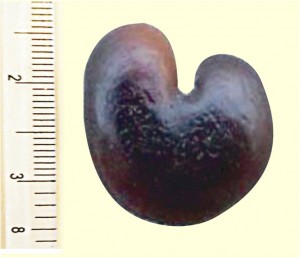 Perhaps the most iconic African tree, the baobab has been featured in the west as gigantic trees in the novella ‘The Little Prince’ by Antoine de Saint-Exupery and as the Tree of Life in Disney’s ‘The Lion King’. Both representations are rooted in real-life perceptions of the baobab. At 20m tall, it towers above most vegetation in the African savannah and can be seen miles away. It is also considered as the tree of life since it provides shelter, food, and water to nearby inhabitants. Most parts of the tree can be utilized: the cork-like bark is a fire-resistant material used make clothes and rope, the leaves are used for condiments and herbal medicine, and the hollow mature trunks can store water or be used as shelter. More importantly, the fruit is edible and highly nutritious.
Perhaps the most iconic African tree, the baobab has been featured in the west as gigantic trees in the novella ‘The Little Prince’ by Antoine de Saint-Exupery and as the Tree of Life in Disney’s ‘The Lion King’. Both representations are rooted in real-life perceptions of the baobab. At 20m tall, it towers above most vegetation in the African savannah and can be seen miles away. It is also considered as the tree of life since it provides shelter, food, and water to nearby inhabitants. Most parts of the tree can be utilized: the cork-like bark is a fire-resistant material used make clothes and rope, the leaves are used for condiments and herbal medicine, and the hollow mature trunks can store water or be used as shelter. More importantly, the fruit is edible and highly nutritious.
The baobab fruit has 3 times more Vitamin C than oranges, 50% more calcium than spinach, and is high in antioxidants. The fruits are filled with pulp that dries and hardens, resembling dry bread. This earned it the moniker ‘monkey bread’. The pulp is usually tart and citrusy but can be eaten raw. Traditionally, it dissolved in milk or water and sugar or mixed with corn meal or cassava.
The fruit is traditionally used to treat fever, diarrhea, dysentery, haemoptysis, small pox, and measles. When mixed with honey, it is used as a cough syrup. Arabic sailors carry the fruit in ships to prevent scurvy.
Some experiments on rats demonstrated anti-inflammatory and pain-killing effects, reduced oedemas from formalin, and decreased temperature from fever. Other tests indicate that the baobab pulp can be even used to treat sickle-celled anemia. The traditional drink is about as effective as the WHO solution in treating diarrhea.
Western interest on the fruit grew when the European Union approved the import of baobab pulp in 2008. Come 2009, the US Food and Drug Administration approved the safety of consuming the fruit. This regulation opened opportunities for health companies to create nutritional supplements containing the pulp. The Baobab Fruit Company, formed in Italy in 2001, was the first to sell unpatented dietary supplements, skin creams, and tonics made from the pulp. The products are mainly sold in Italy but are also exported to other countries.
2. African Oil Bean (Pentaclethra macrophylla)
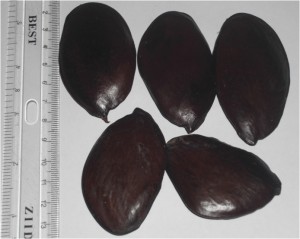 Like the baobab, the African oil bean tree has multiple uses. As a leguminous tree, it is planted by farmers to improve condition of the soil and is beneficial for agroforestry areas. The soft wood is ideal for carvings, fencing and charcoal. The bark and leaves are crushed and used in liniments, poultices, and remedies for convulsion, itching, lactogenicity, wound, and diarrhea. When burned to ash, the pods are used as dye and salt substitute. Finally, the seeds are a source of oil.
Like the baobab, the African oil bean tree has multiple uses. As a leguminous tree, it is planted by farmers to improve condition of the soil and is beneficial for agroforestry areas. The soft wood is ideal for carvings, fencing and charcoal. The bark and leaves are crushed and used in liniments, poultices, and remedies for convulsion, itching, lactogenicity, wound, and diarrhea. When burned to ash, the pods are used as dye and salt substitute. Finally, the seeds are a source of oil.
The seed in the pod is edible and is eaten as a fruit. Traditionally, it is prepared as a fermented snack called ‘ugba’. The seeds are composed of up to 44% protein with all 20 essential amino acids, which are ideal substitutes for areas with limited meat supply. The seeds also contain essential fatty acids and minerals like magnesium, iron, manganese, copper, phosphorous, and calcium. However, fermentation decreases the minerals found in the seed.
African oil bean seeds contain saponins or phytochemicals that can reduce cholesterol levels. Findings in a study done in Nigeria suggest that patients who regularly eat ugba had reduced risks of cancer and tobacco-related diseases. In a separate study, the oil extract is found to be an effective treatment for diarrhea. The seed can also treat anemia since it increases the amount of hemoglobin.
Some studies show that certain seeds contain traces of paucine, a poisonous alkaloid and caffeoylputrescine, a growth depressant. Bacteria and mold are also found to grow on the surface of the seeds, which can be killed by proper washing and cooking.
3. Kola Nut (Cola sp.)
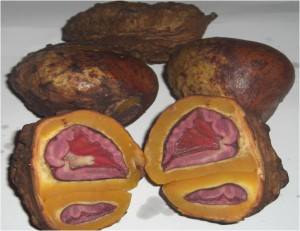 It is a little known fact that carbonated cola beverages are flavored by the humble kola nut from Africa. The nut is an ideal ingredient for the beverage because of high amounts of caffeine. Although artificial flavorings have been produced, niche producers use it to satisfy the increased demand for products with organic and natural ingredients.
It is a little known fact that carbonated cola beverages are flavored by the humble kola nut from Africa. The nut is an ideal ingredient for the beverage because of high amounts of caffeine. Although artificial flavorings have been produced, niche producers use it to satisfy the increased demand for products with organic and natural ingredients.
The nut also contains theobromine, the same diuretic substance found in cocoa and tea. Other nutrients in the kola nut include tannins, phenolics, phlobapens, protein, thiamine, riboflavin, and niacin.
With it high caffeine content, locals chew the kola nut to diminish hunger and fatigue. The caffeine can also expand the bronchial air passages and is used to treat whooping cough and asthma. It can also treat migraine because caffeine and theobromine increase blood flow in the brain, carrying more oxygen and nutrients. Locals also chew the nuts before a meal because it can aid digestion by stimulating the production of gastric acid.
Because it is a stimulant, the kola nut should be used with caution. One, it may have undesirable effects with certain medication. Like any product with high caffeine, it is not advisable for people suffering from insomnia, anxiety problems or ulcer. In a research conducted on cats, habitual chewing of kola nut may also cause abnormal heart readings.
4. Prekese (Tetrapleura tetraptera)
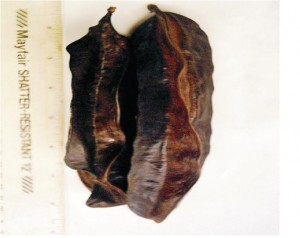 The wealth of prekese as a medicinal plant has been embedded in local and tradition in Nigeria and neighboring parts of Africa for centuries. The therapeutic properties of the plant has been documented since 1948 and authenticated in laboratory and field experiments.
The wealth of prekese as a medicinal plant has been embedded in local and tradition in Nigeria and neighboring parts of Africa for centuries. The therapeutic properties of the plant has been documented since 1948 and authenticated in laboratory and field experiments.
The fruit is conventionally used as spice and as a natural multivitamins. It is rich in protein, lipids, potassium, iron, magnesium, phosphorous, and vitamin C. In Nigeria, it is cooked in soup and fed to mothers to prevent post-partum contraction. In Ghana, prekese has been used to flavor softdrinks. The drink has been approved by the Food and Drugs board, and is marketed to reduce hypertension, decrease the severity of asthma attacks, and promote blood flow.
Studies indicate that prekese extract reduces the risk of certain types of ulcer. It can also inhibit the growth of bacteria. Dried fruits have been powdered and combined in soap bases to include anti-microbial properties. Moreover, the fruit extract can reduce convulsions with its ability to slow down the central nervous system.
5. White Star Apple (Chrysophyllum albidum)
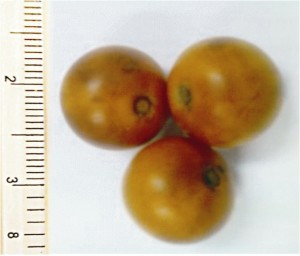 Immortalized in the Nigerian stamps series, the white star apple can be found seasonally in low-land rainforests. The bark of the tree is traditionally used to treat yellow fever and malaria, while the leaf can treat wounds, stomachache, and diarrhea. The seeds are also used to treat vaginal and skin infections in Nigeria.
Immortalized in the Nigerian stamps series, the white star apple can be found seasonally in low-land rainforests. The bark of the tree is traditionally used to treat yellow fever and malaria, while the leaf can treat wounds, stomachache, and diarrhea. The seeds are also used to treat vaginal and skin infections in Nigeria.
The fruit contains more vitamin C than guava or orange. They are also an excellent source of calcium, potassium, phosphorous, magnesium, tannins, flavonoids, terpenoids, and phytochemicals. While they are regularly consumed as a snack, recent studies indicate that it has properties that can be used to lower blood sugar and cholesterol prevent and treat heart diseases.
6. African Mango (Irvingia gabonensis)
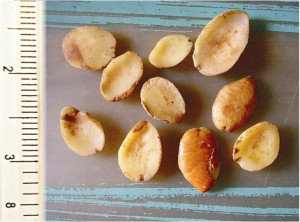 The African mango recently garnered a lot of Hollywood hype when Oprah featured the fruit on her show as an effective supplement for weight loss. Since then, companies have capitalized the impetus and marketed products that contain African mangoes.
The African mango recently garnered a lot of Hollywood hype when Oprah featured the fruit on her show as an effective supplement for weight loss. Since then, companies have capitalized the impetus and marketed products that contain African mangoes.
While the fruit itself is fairly nutritious, the slimming properties come from the seeds. The fruit contains calcium, phosphorous, iron, and vitamin C. Compared to the fruit, the seeds have six times more calcium, about twice more iron, and additional thiamin, riboflavin, and niacin. The seeds also have a high fiber content that aid in removing cholesterol from the body.
A study was published in the journal of Lipids in Health and Disease (2008) that evaluated the effects of African mango seed capsules on weight loss in overweight and obese human subjects. The subjects were divided into two groups, one was taking a placebo. After the tests, the group who took the African mango capsules lost an average of 5.26% of their body weight, more than 4% from the placebo. In a separate study published in the same journal, subjects who took pills that contain African mango and Veldt grape extracts lost more weight than those who took Veldt grape pills alone.
It has been found that the African mango extract increases adiponectin, PPAR gamma, glycerol-3 phosphate dehydrogenase and leptin in the body. These substances boost our body’s metabolism and in turn, help burn fat. However, it can also cause certain side effects like insomnia and headache.
Written by Christian Cangao

